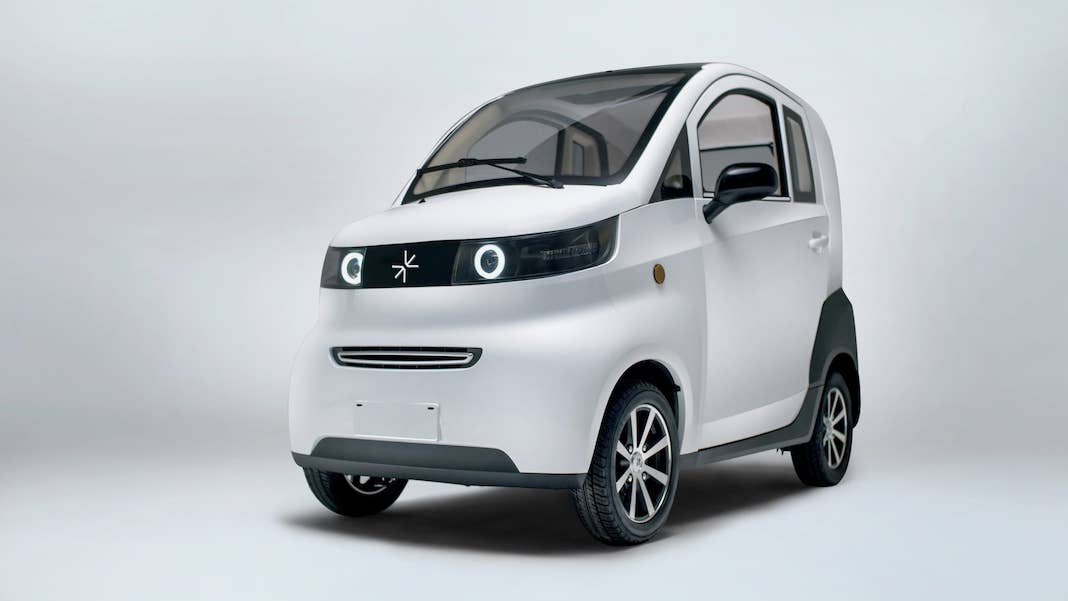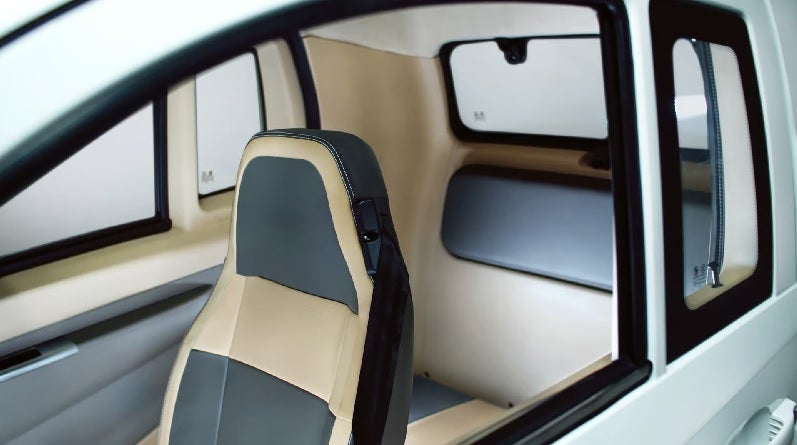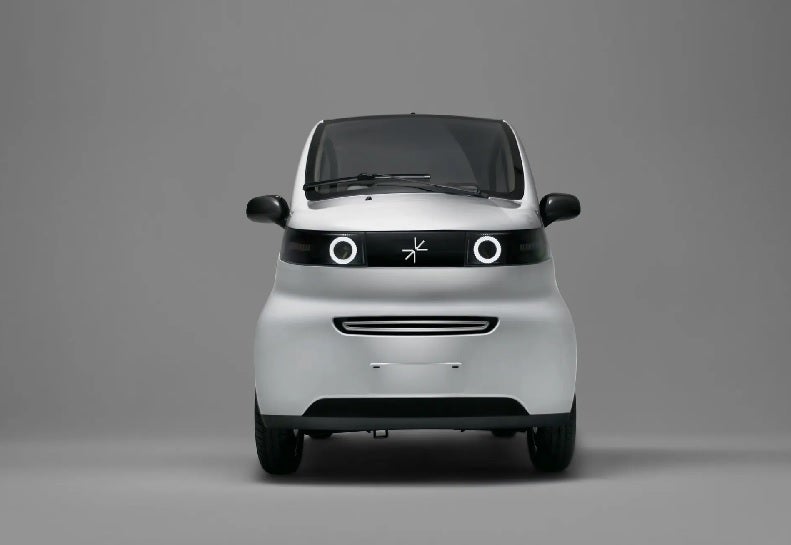This Tiny Electric Car Costs $7,650—and It Has a Face

Share
Americans spend a lot of time in cars. Before the Covid-19 pandemic, the average US driver was on the road for about an hour a day. Accordingly, we like roomy vehicles with wide, comfortable seats, plenty of special features, and high horsepower; these all come in handy when traveling across a sprawling city, or from a city center to a suburb, or between suburbs dozens of miles apart.
But in countries with more compact geography, cars can be more compact too—and the shorter distances traveled mean it’s easier to depend on batteries instead of gas. Last week, British car company Ark Motors launched its first model, the Zero. It’s the latest on a growing list of compact electric vehicles.
The Zero is so compact, in fact, that you could debate whether to call it a car (it’s technically classified as a quadricycle). At 8.2 feet long by 3.9 feet wide and 5.3 feet high, it takes up just a quarter of a standard parking space. It still weighs over a thousand pounds, though (1,078 to be exact), much of that weight contained in its 80Ah lithium-ion battery pack. Its price tag is £5,995, or about $7,650.
The vehicle’s body is made of aluminum, which has better shock absorption than steel, and is integrated with its chassis in a single unit. This is called a monocoque design—it’s French for “single shell” and refers to structural systems where weight is supported by an object's external skin, like an egg shell. Ark says this unified structure improves the car's strength and rigidity and makes it safer.
There’s room for two people inside, though not in a traditional side-by-side seating configuration; the car is too narrow to fit two seats next to each other. Instead, the driver sits in front and the passenger behind. There’s room for a dog too, as the company’s website enthusiastically points out, though they don’t specify whether that dog can be as big as a German shepherd or small as a dachshund; probably somewhere in between.

The Ark Zero's interior. Image Credit: Ark Motors
Drivers will mostly use the Zero to run errands around town or commute short distances within a given town or city. They won’t be getting on any highways, because the car’s maximum speed is a leisurely 28 miles per hour. The battery has a range of 50.3 miles, which should be enough to go a few days without needing to charge, since drivers needing to go much more than 10 or 20 miles per day would be better off using a regular automobile.
When the Zero does need a charge, it can be plugged into a regular outlet in the owner’s home—same as a toaster, the company’s website points out. Going from empty to full isn’t exactly quick; Ark says charging takes six to eight hours. But on the plus side, they also say a full charge costs less than one British pound.
A sunroof, push-button start, reverse camera, radio, LCD screen, and bluetooth connectivity are all standard features of the tiny car. As a bonus, the car’s front end looks a lot like a face—a pleasantly smiling robotic face with headlights as eyes, Ark’s logo as the nose, and a vent as the mouth. You could even say the two side mirrors look like ears. Because who doesn’t want an anthropomorphized tiny electric car?
Be Part of the Future
Sign up to receive top stories about groundbreaking technologies and visionary thinkers from SingularityHub.



Image Credit: Ark Motors
The Zero has several tiny electric predecessors, including the French Citroën Ami (costs $6,700 or can be rented for the price of a scooter), the Dutch Squad car (costs $6,800 and has solar panels on the roof), and the Chinese Wuling Hong Guang Mini EV (costs $4,200 and outsold Tesla’s Model 3). One of the closest things we’ve got in the US is Kandi America’s K27, which was approved for sale in California in 2020 and costs $7,999 after state and federal subsidies.
These vehicles are part of a growing trend to downsize personal transportation while still keeping it personal. The norm we’ve gotten used to in the US doesn’t work so great, as traffic, congestion, parking headaches, and pollution show. Does every adult really need a hulking SUV or full-sized sedan to themselves to get through their daily routines? Probably not. Plus, these vehicles sit empty and take up parking space for the vast majority of the day and night.
Given the layout of American cities and towns, it may be a while before tiny cars become a thing here (if ever), but they appear to be burgeoning in Europe and Asia, and the micromobility trend is expected to continue growing.
The Ark Zero wants its slice of the pie, and could get it if UK drivers like its small size and don’t mind its unusual seating configuration. The car is available to buy on the company's website, with delivery promised in 14 to 16 weeks. They’re only selling in the UK for now, but say more locations are coming soon.
Image Credit: Ark Motors
Vanessa has been writing about science and technology for eight years and was senior editor at SingularityHub. She's interested in biotechnology and genetic engineering, the nitty-gritty of the renewable energy transition, the roles technology and science play in geopolitics and international development, and countless other topics.
Related Articles

AI Companies Are Betting Billions on AI Scaling Laws. Will Their Wager Pay Off?

Super Precise 3D Printer Uses a Mosquito’s Needle-Like Mouth as a Nozzle

Is the AI Bubble About to Burst? What to Watch for as the Markets Wobble
What we’re reading